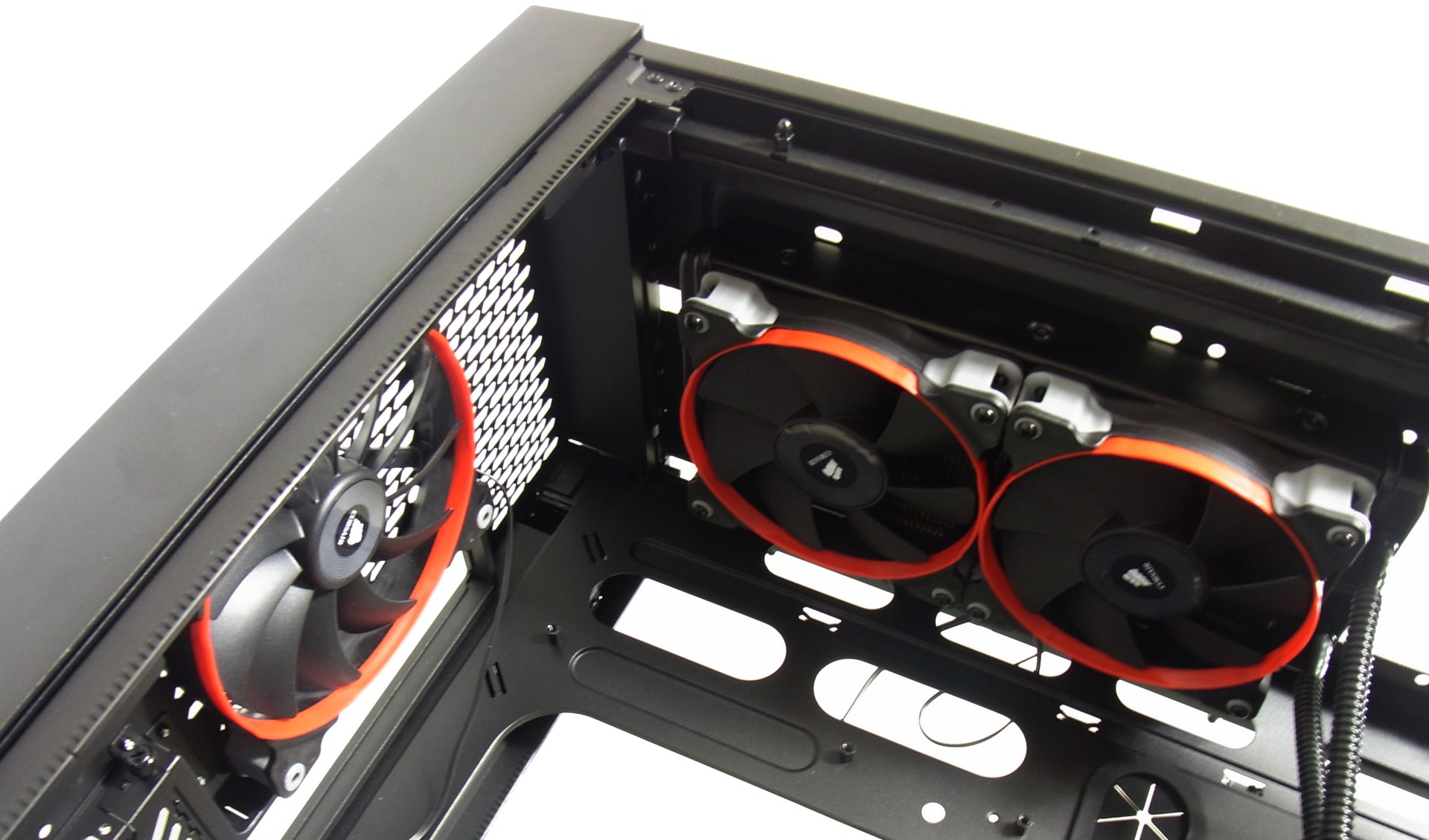Corsair Obsidian 900D Review: Making Room For High-End Gear
Corsair already offers a heavy tower case called the Obsidian 800D. Now, the company is one-upping itself with the Obsidian 900D. Is this a genuine high-end enclosure, a bomb shelter, or a mess of sheet metal? We put the case through our bevy of tests.
Replacing The Fans With Quieter Alternatives From Corsair
Corsair could have shopped in-house for its ideal case fans. Since the company didn't, I'm taking the liberty of doing it now, spending just a few dollars more. I have an AF140 around back and three AF120s up front. The latter are tasked with pushing air into the case, while the former exhausts it out. Notice the two SP120s in the stack; those will be used later with Corsair's H100 closed-loop liquid cooler.
The SP120s ship with blue rings around the radius. However, Corsair includes patriotic red, white, and blue liners you can swap in or out to taste. In the shot below, you can see I color-coded my fans, putting red rings on those exhausting hot air and blue rings on the intake coolers.
The trio of replacements up front, which spin at 1,100 RPM, yield the most significant noise reduction. Once we get a fan controller installed, the acoustics become truly Zen-like.
The uppermost and middle front-mounted fans are responsible for blowing air over our graphics cards, while the bottom cooler pushes outside air to the power supply and three internal 3.5" drive bays (along with the SATA hot-swap tray). Because their responsibilities are different, so too should the speed at which they spin. Incidentally, that's why I decided to add a six-channel controller, adjusting each fan independently. Is there a good reason to do this? There's only one way to find out.
Get Tom's Hardware's best news and in-depth reviews, straight to your inbox.
Current page: Replacing The Fans With Quieter Alternatives From Corsair
Prev Page The Obsidian 900D's Stock Cooling System Next Page Six-Channel Fan Control: Scythe Kaze Master Pro
Igor Wallossek wrote a wide variety of hardware articles for Tom's Hardware, with a strong focus on technical analysis and in-depth reviews. His contributions have spanned a broad spectrum of PC components, including GPUs, CPUs, workstations, and PC builds. His insightful articles provide readers with detailed knowledge to make informed decisions in the ever-evolving tech landscape
-
slomo4sho Thanks for including the acoustics and temperature for a workhorse in addition to the gaming rig.Reply -
kitsunestarwind I am seriously waiting for this to be come available in Australia, I have the 800D , I love it, but I have no room left and I want/Need more liquid cooling Rad space without resorting to Case Mods, The Corsair 900D will do me perfectly and hopefully won't look so fullReply -
slicedtoad ^yeah, I've never seen any computer related benchmarks done in Fahrenheit , lol.Reply
Very nice review though, Corsair makes some sweet cases, second only to the custom suppliers (mountain mods and the others) but much cheaper. -
JJ1217 kitsunestarwindI am seriously waiting for this to be come available in Australia, I have the 800D , I love it, but I have no room left and I want/Need more liquid cooling Rad space without resorting to Case Mods, The Corsair 900D will do me perfectly and hopefully won't look so fullReply
Be prepared to fork out an extra $120 because of the simple fact we're from Australia.
-
Vatharian I don't fully understand your review. Workstation-class rig is up to the challenge for exploring 900D abilities, but gaming rig? You slap off-the-shelf closed loop watercooler on the midrange CPU (TDP wise), one simple GPU and call it 'watercooled system'? What's the point? Get two or three water coolled GPUs in addition to CPU, set up one loop and them evaluate if the case is suitable for serious LC&OC, and if it's possible to arrange radiators such way to get rid of the heat and not kill usability. Point is: for such class of case you put low-end gaming rig. It doesn't tell us will it perform if serious system is inside. If the case performs with high-wattage rig, it will do for any smaller one, but not necessarily the other way around.Reply -
Idonno My 800D preforms great with a high end system and there is every indication the 900D is even better.Reply


